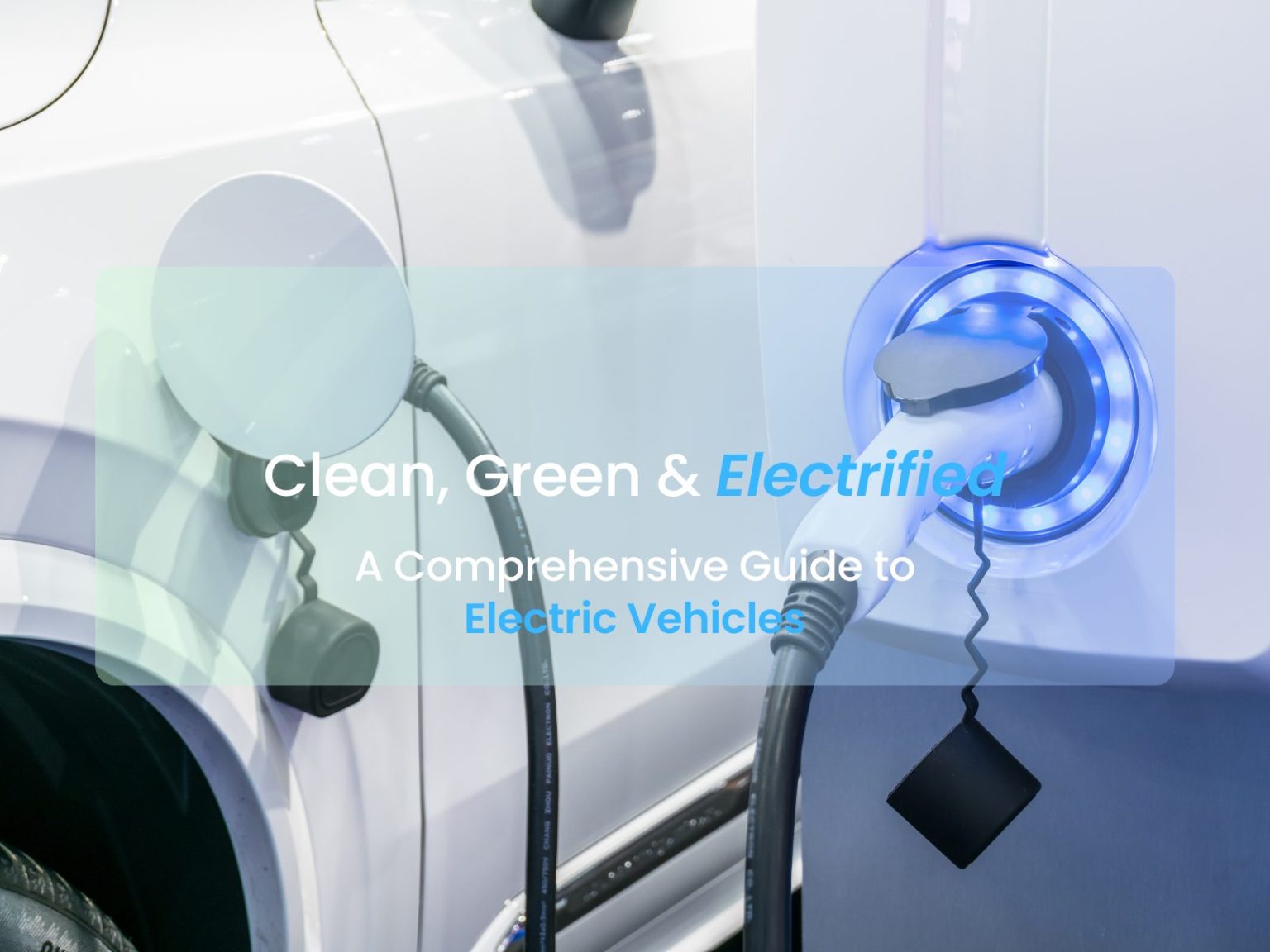Clean, Green, and Electrified: A Comprehensive Guide to Electric Vehicles
Electric Vehicle Guide - Table of Contents
If you’re new to the world of electric vehicles (EVs), you’re in the right place! In this guide, we’ll cover the basics of what an electric vehicle is, the major manufacturers of EVs in the United States (US) and the European Union (EU), the advantages and disadvantages of electric cars, and why people should care about electric vehicles. We’ll also explore why electric vehicles are the future of transportation.
What is an electric vehicle?
Simply put, an EV is a type of vehicle that uses electric motors powered by batteries or fuel cells to propel the vehicle, instead of using an internal combustion engine (ICE) that relies on fossil fuels like gasoline or diesel.
What are the different types of electric vehicles?
There are currently three main types of EVs: battery electric vehicles (BEVs), plug-in hybrid electric vehicles (PHEVs), and Fuel Cell Electric Vehicles (FCEV).
Battery Electric Vehicles (BEVs)
BEVs are powered solely by an electric motor and rely on a large battery pack to store electricity. They do not have a traditional internal combustion engine and do not require any gasoline or diesel to operate. BEVs are charged by plugging them into an electric power source, such as a charging station or a regular household outlet.
Plug-in Hybrid Electric Vehicles (PHEVs)
PHEVs, on the other hand, have both an electric motor and an internal combustion engine. They can be charged by plugging them into an electric power source, like a BEV, but they also have a gasoline or diesel engine that can be used as a backup when the battery is depleted.
PHEVs offer the flexibility of using electricity for short trips and gasoline or diesel for longer distances.
Fuel Cell Electric Vehicles
FCEVs, or Fuel Cell Electric Vehicles, are a type of electric vehicle that use hydrogen fuel cells to generate electricity to power an electric motor, which propels the vehicle. Like battery BEVs and PHEVs, FCEVs are considered to be a form of electric vehicle (EV), as they use electricity to power the motor and produce zero tailpipe emissions.
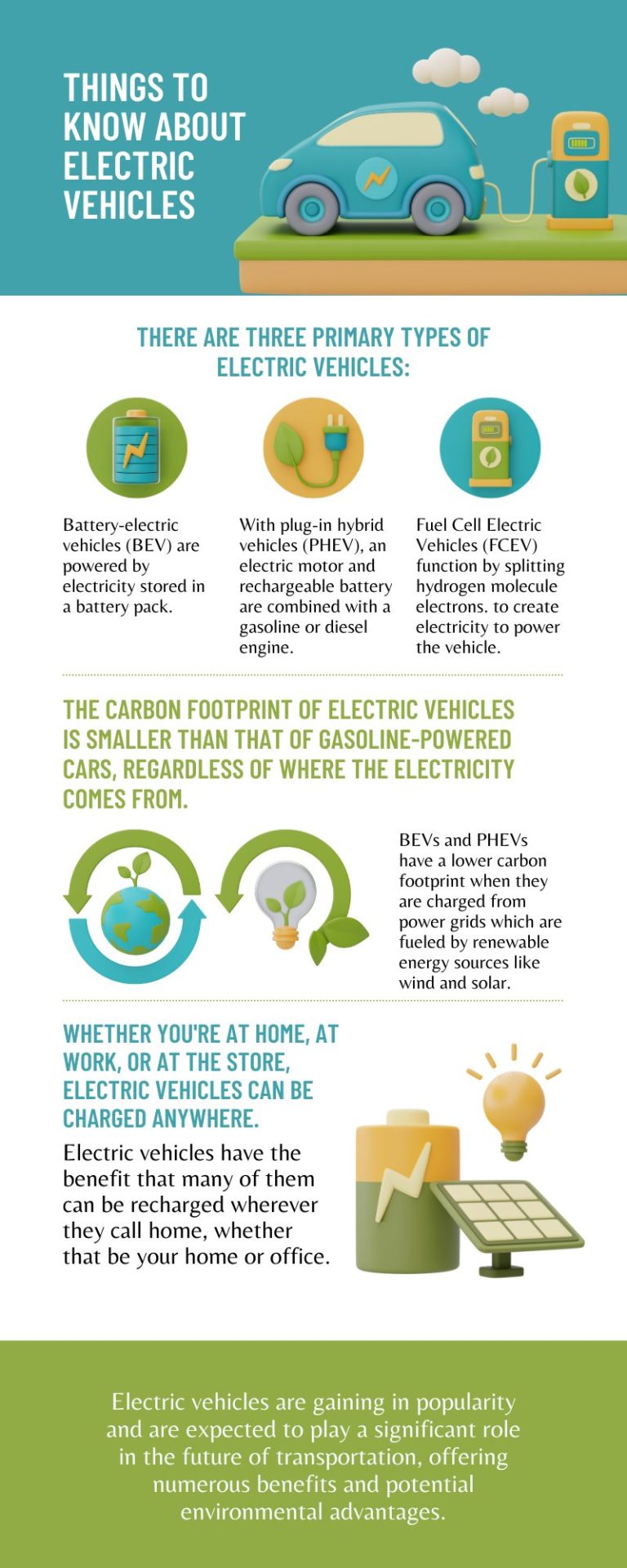
How do EVs work?
Electric vehicles (EVs) work by using electricity stored in a battery to power an electric motor, which drives the wheels and propels the vehicle forward. EVs rely on rechargeable batteries to store and release electrical energy, which is used to power the motor that drives the wheels.
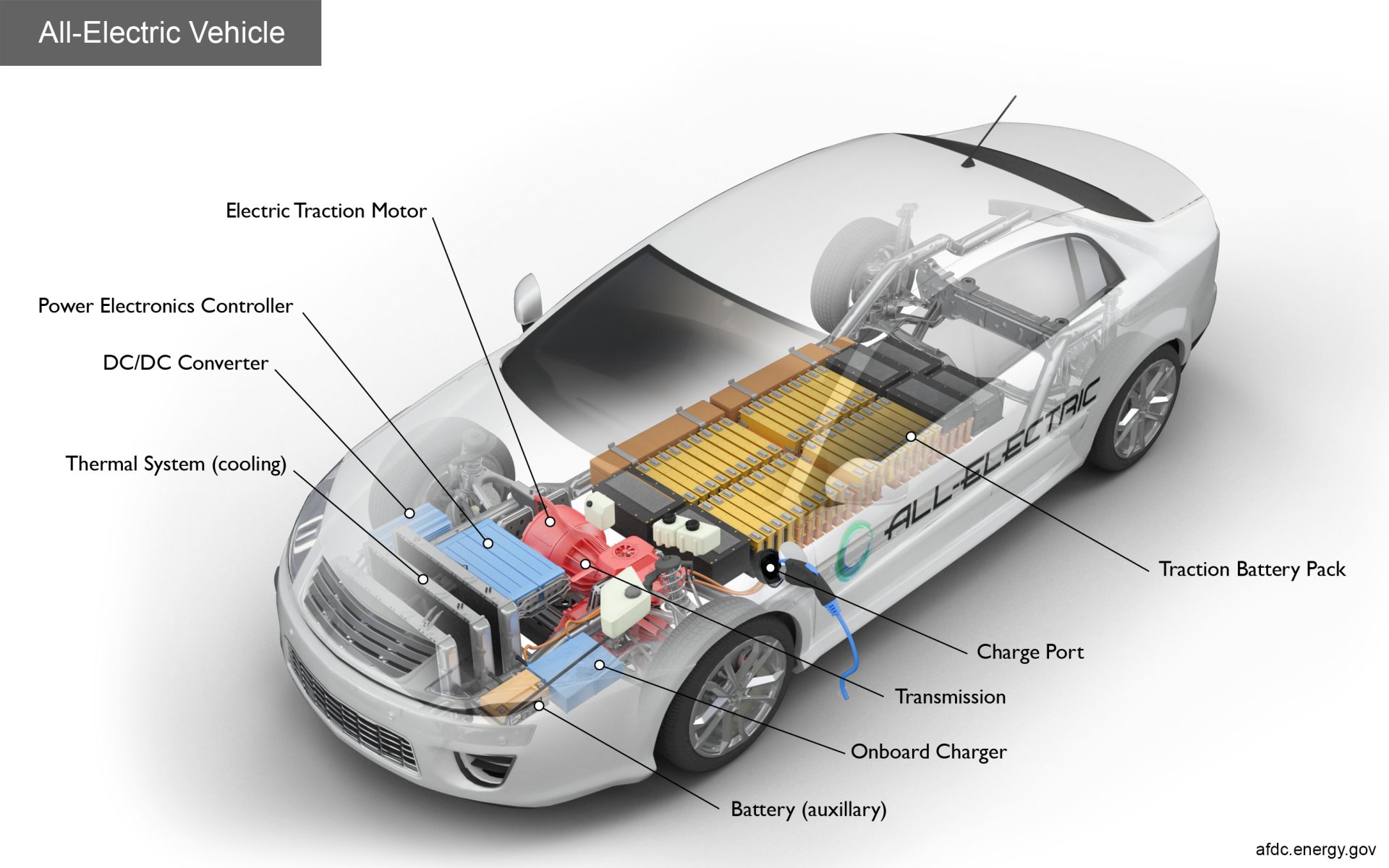
The basic components of an electric vehicle include:
Battery
The battery is the heart of an electric vehicle. It stores electrical energy in the form of chemical energy and provides power to the electric motor. EV batteries are typically made of lithium-ion cells, which are lightweight, have high energy density, and can be recharged multiple times.
Electric Motor
The electric motor is responsible for converting electrical energy from the battery into mechanical energy to drive the wheels of the vehicle. Electric motors are highly efficient and provide instant torque, which results in quick acceleration.
Power Electronics
Power electronics are responsible for managing the flow of electrical energy between the battery, motor, and other vehicle components. They control the voltage, current, and frequency of the electricity to ensure efficient and reliable operation of the electric vehicle.
Charger
The charger is used to recharge the battery of the electric vehicle. It converts the alternating current (AC) from the electric grid into direct current (DC) that is stored in the battery. EV chargers can be installed at home, at workplace charging stations, or at public charging stations.
Regenerative Braking System
Electric vehicles often feature regenerative braking, which captures energy from braking and stores it back into the battery. This helps to extend the range of the vehicle and increase overall energy efficiency.
Vehicle Control System
The vehicle control system manages and coordinates the operation of various components in an electric vehicle, including the battery, motor, power electronics, and charging system. It ensures that the vehicle operates safely, efficiently, and smoothly.
Overall, electric vehicles work by using electricity stored in a battery to power an electric motor, which drives the wheels and propels the vehicle forward. The battery is charged using an external charger, and the vehicle control system manages the flow of energy to ensure efficient and reliable operation of the electric vehicle.
A hybrid vehicle and a plug-in hybrid electric vehicle (PHEV) are both types of vehicles that combine an internal combustion engine (ICE) with an electric motor to power the wheels. However, there are some key differences between the two types of vehicles.
Operation: In a hybrid vehicle, the electric motor and the internal combustion engine work together to propel the vehicle. The electric motor assists the ICE during acceleration and provides power at low speeds, while the ICE takes over during higher speeds or when more power is needed. The battery in a hybrid vehicle is charged through regenerative braking or by the ICE.
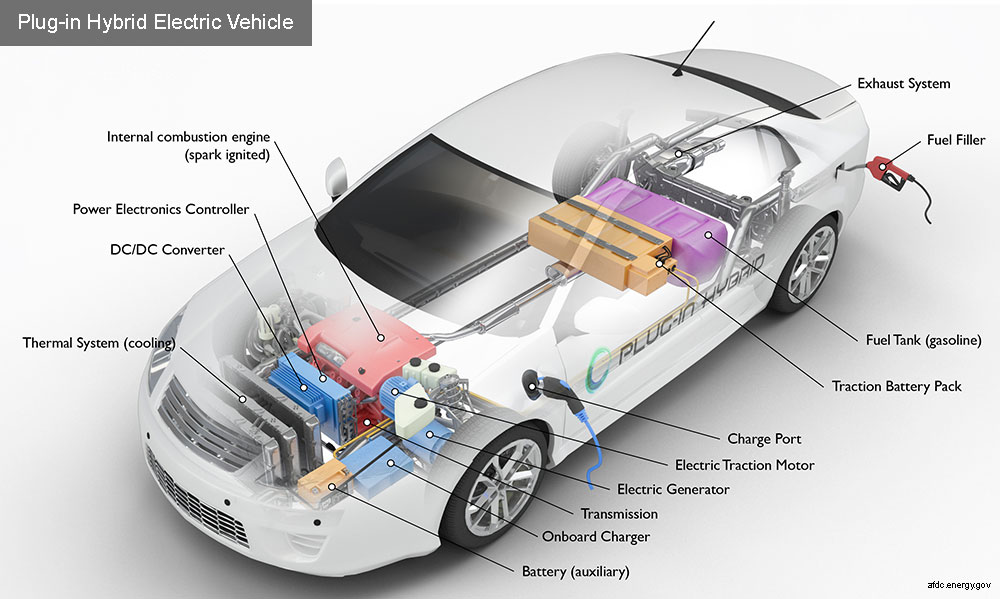
How does a Plug-in Hybrid Electric Vehicle Work?
In contrast, a plug-in hybrid electric vehicle (PHEV) has a larger battery that can be charged from an external power source, such as a charging station or a standard electrical outlet. This means that a PHEV can operate solely on electric power for a certain distance, depending on the battery size, before the internal combustion engine kicks in. This allows PHEVs to have longer all-electric driving ranges compared to traditional hybrids.
What is the difference between a Plug-In Hybrid Electric Vehicle (PHEV) and Hybrid Electric Vehicle (HEV)?
Battery Size and Range
The battery size and electric driving range differ between hybrid vehicles and PHEVs. Hybrid vehicles usually have smaller batteries with limited electric driving ranges, typically ranging from a few miles to a couple of dozen miles. PHEVs, on the other hand, have larger batteries that provide longer all-electric driving ranges, typically ranging from 20 to 50 miles or even more, depending on the model.
Charging
Hybrid vehicles do not typically require external charging, as the battery is charged through regenerative braking or by the internal combustion engine. On the other hand, PHEVs have the option for external charging, which allows the battery to be charged from an external power source. This means that PHEV owners have the flexibility to charge their vehicles at home, at work, or at public charging stations, which can provide increased all-electric driving opportunities.
Fuel Efficiency
PHEVs generally have higher fuel efficiency compared to traditional hybrids, as they can operate on electric power alone for a longer distance. This can result in lower fuel consumption and reduced emissions during all-electric driving. However, once the battery is depleted and the internal combustion engine takes over, the fuel efficiency of a PHEV may be similar to that of a traditional hybrid.
Cost
PHEVs generally tend to be more expensive than traditional hybrids, due to the larger battery size and the added complexity of the charging system. However, PHEV owners may be eligible for tax incentives or other financial incentives, depending on their location, which can help offset the initial cost.
While both hybrid vehicles and plug-in hybrid electric vehicles (PHEVs) combine an internal combustion engine with an electric motor, PHEVs have larger batteries that can be charged externally, providing longer all-electric driving ranges compared to traditional hybrids. PHEVs also generally offer higher fuel efficiency during all-electric driving, but may be more expensive upfront due to the larger battery size and charging system.
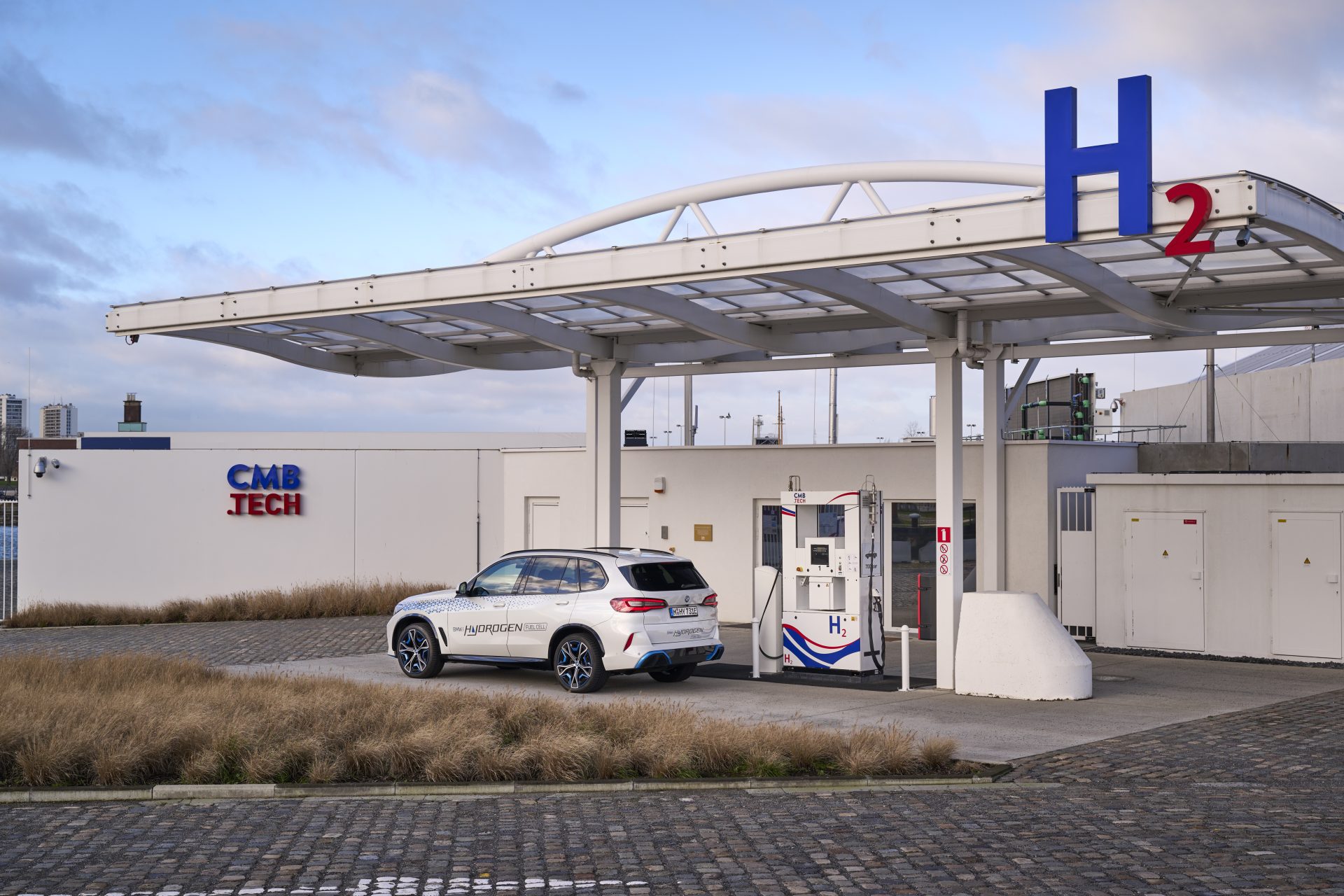
Do Fuel Cell Electric Vehicles have a future?
FCEVs offer several advantages, such as longer driving ranges compared to battery electric vehicles (BEVs), typically ranging from 300 to over 400 miles, and fast refueling times, as hydrogen can be refueled in a matter of minutes, similar to traditional gasoline-powered vehicles. FCEVs also do not require a large battery pack, which can result in lighter vehicles compared to BEVs, and may be more suitable for certain applications, such as long-haul transportation or heavy-duty vehicles.
However, there are some challenges associated with FCEVs. One major challenge is the availability and infrastructure for hydrogen refueling stations, which is still limited compared to gasoline stations or electric charging stations, making it less convenient for widespread adoption. Additionally, the production of hydrogen often requires energy-intensive processes, and the availability of renewable hydrogen, which is produced using renewable energy sources, is currently limited. The cost of producing, storing, and transporting hydrogen can also be relatively high compared to other forms of energy.
Despite these challenges, FCEVs have the potential to be part of the future of transportation, especially in specific use cases where long driving ranges and fast refueling times are critical. Continued advancements in hydrogen production methods, infrastructure development, and cost reduction efforts may help accelerate the adoption of FCEVs in the future. However, it is important to note that the overall future of FCEVs, as well as other types of EVs, will depend on a variety of factors, including technological advancements, regulatory policies, consumer preferences, and market dynamics.
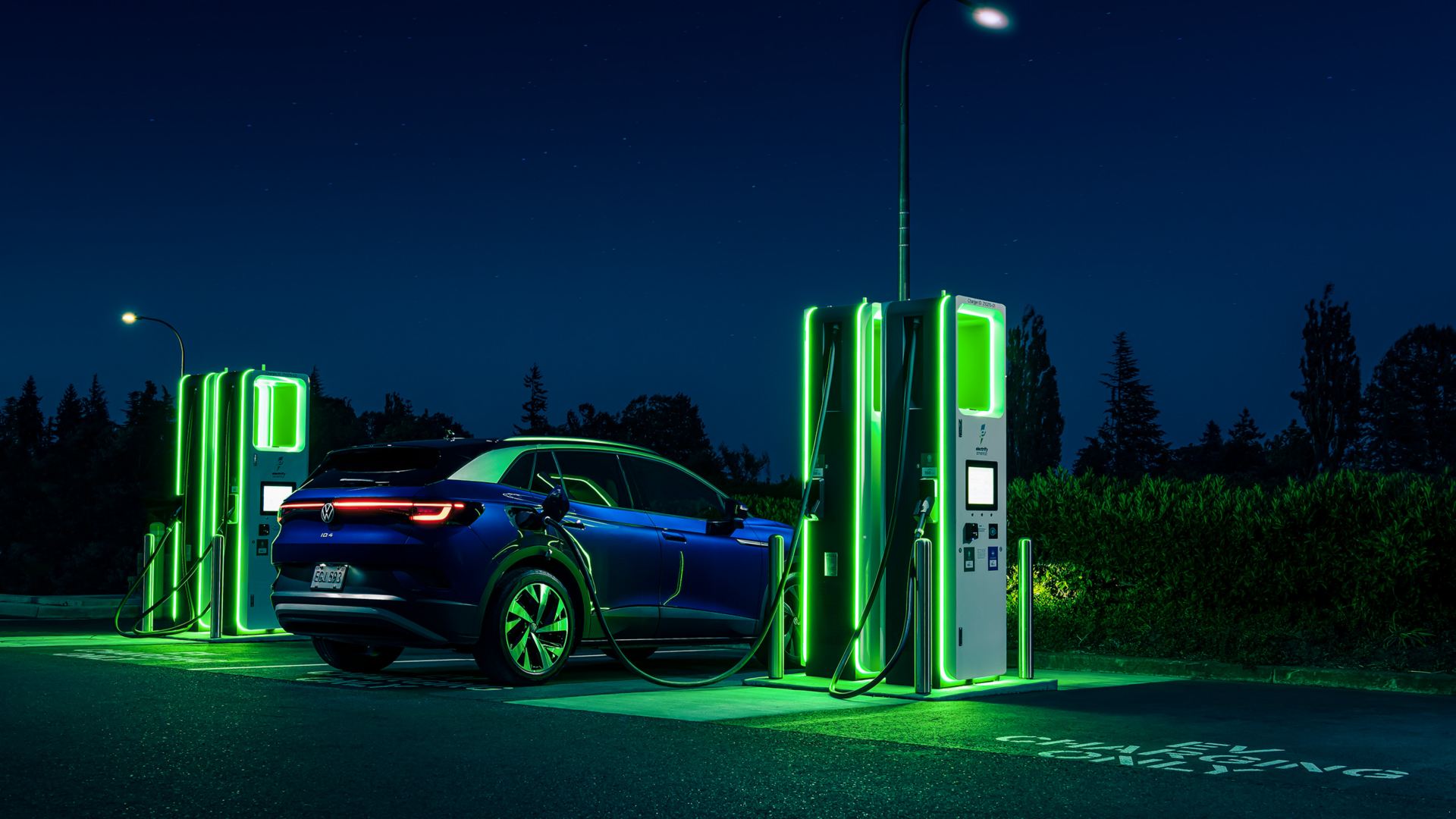
What are the differences between electric vehicles and gas vehicles?
Powertrain
The most significant difference between EVs and gas vehicles is the powertrain. EVs use an electric motor powered by a battery pack to drive the vehicle, whereas gas vehicles use an internal combustion engine (ICE) that runs on gasoline or diesel to generate power.
Fueling vs. Charging
EVs are charged using electricity, either at home, at public charging stations, or at fast-charging stations, whereas gas vehicles are fueled with gasoline or diesel at gas stations. EVs require charging infrastructure, such as charging cables, charging stations, and in some cases, wall-mounted chargers at home or workplace, whereas gas vehicles require access to gas stations for refueling.
Emissions
EVs produce zero tailpipe emissions, meaning they do not release any pollutants into the air during operation. In contrast, gas vehicles emit various pollutants, such as carbon dioxide (CO2), nitrogen oxides (NOx), and particulate matter (PM), contributing to air pollution and climate change.
Maintenance
EVs generally have fewer moving parts compared to gas vehicles, which typically have complex mechanical components in their engines, transmission, and exhaust systems. This means that EVs often require less maintenance, such as oil changes, spark plug replacements, and exhaust system repairs.
Driving Experience
EVs typically offer instant torque and smooth acceleration, providing a unique driving experience. Gas vehicles, on the other hand, may have a delay in power delivery due to the need to rev the engine, and may produce more noise and vibration during operation compared to EVs, which are generally quieter.
Range and Refueling/Charging Time
EVs typically have a limited driving range compared to gas vehicles, although this is improving with advancements in battery technology. Gas vehicles have a longer driving range and can be refueled quickly at gas stations, whereas EVs may require longer charging times depending on the charging infrastructure and battery capacity.
Cost
The upfront cost of EVs can be higher than gas vehicles, mainly due to the cost of battery technology. However, EVs may have lower operating and maintenance costs over time, including lower fuel/charging costs, reduced maintenance needs, and potential tax incentives or rebates.
It’s important to note that the specific differences between EVs and gas vehicles can vary depending on the make and model, as well as advancements in technology and regulations. It’s recommended to research and compare different vehicle types based on individual needs, preferences, and driving habits to make an informed decision.
What are the advantages of EVs?
There are several advantages to driving an electric vehicle:
Environmental Benefits: EVs produce zero tailpipe emissions, which means they do not contribute to air pollution or greenhouse gas emissions. This can help reduce air pollution in urban areas and combat climate change.
Lower Operating Costs
Although the upfront cost of an electric vehicle may be higher than a traditional gasoline-powered vehicle, EVs tend to have lower operating costs in the long run. EVs typically require less maintenance since they have fewer moving parts, no oil changes, and fewer wear and tear on brakes. Additionally, the cost of electricity for charging an EV is generally lower than the cost of gasoline, resulting in potential savings on fuel costs over time.
Energy Independence
Electric vehicles reduce dependence on fossil fuels since they can be powered by electricity from renewable sources such as solar or wind. This can help reduce reliance on foreign oil and increase energy independence.
Quieter and Smoother Ride
EVs are generally quieter and provide a smoother ride compared to internal combustion engine vehicles since electric motors produce less noise and vibrations. This can contribute to a more enjoyable driving experience.
Health Benefits
Since EVs do not produce tailpipe emissions, they can contribute to improved air quality, reducing harmful pollutants that can have adverse effects on human health, such as particulate matter and nitrogen oxides.
Part of the Circular Economy
Electric vehicles (EVs) offer several benefits as they relate to the circular economy, which is an economic model that aims to minimize waste and maximize resource efficiency. Some of the key benefits of EVs in the context of the circular economy include:
Reduced resource extraction
The production of EVs requires fewer raw materials compared to traditional internal combustion engine (ICE) vehicles. For example, EVs do not require large quantities of fossil fuels for their operation, and they have fewer moving parts, which reduces the need for materials like steel, aluminum, and plastic. This can help reduce the pressure on natural resources and minimize the environmental impact of resource extraction.
Extended vehicle lifespan
EVs tend to have longer lifespans compared to ICE vehicles. The electric powertrain of an EV has fewer mechanical parts that can wear out or require replacement, resulting in less maintenance and longer vehicle lifetimes. This can help reduce the number of vehicles that end up in landfills and contribute to waste, promoting a more circular approach to vehicle use.
Battery recycling and repurposing
EV batteries can be recycled or repurposed, contributing to the circular economy. When an EV battery reaches the end of its life, it can be recycled to recover valuable materials such as lithium, cobalt, and nickel, which can be used to produce new batteries or other products. Additionally, EV batteries that are no longer suitable for use in vehicles can be repurposed for energy storage, providing a second life for the battery and reducing waste.
Reduced emissions and environmental impact
EVs emit fewer greenhouse gases and air pollutants compared to ICE vehicles, which can help reduce the environmental impact of transportation. By reducing emissions, EVs contribute to mitigating climate change and reducing air pollution, which can have positive environmental and health effects.
Integration with renewable energy
EVs can be charged using electricity generated from renewable sources such as solar and wind, creating synergies with the transition to a low-carbon, renewable energy-based economy. This can help reduce the reliance on fossil fuels and promote the use of clean, renewable energy sources, further contributing to the circular economy by closing the loop on energy production and consumption.
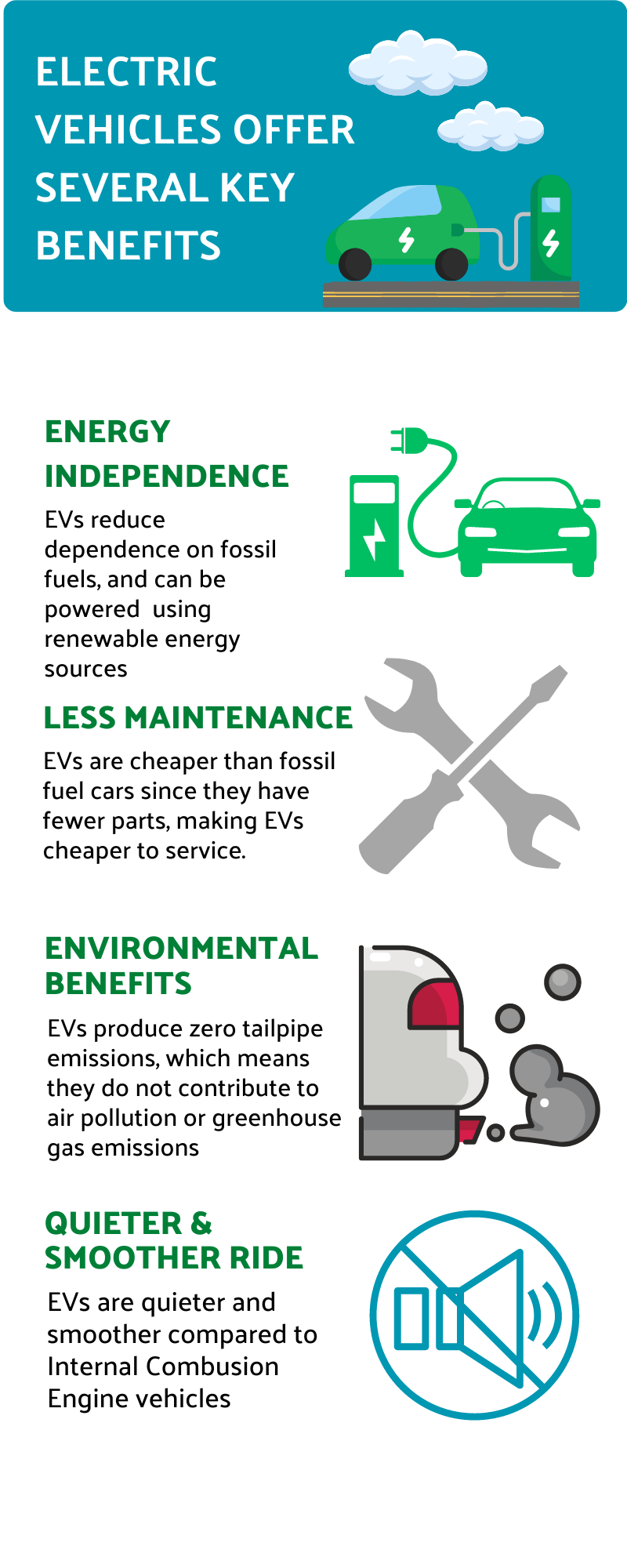

What are the disadvantages of electric vehicles?
While electric vehicles offer many advantages, there are also some disadvantages to consider:
Limited Range
One of the main concerns for EV owners is the limited range compared to traditional gasoline-powered vehicles. Although the range of EVs has been improving, it can still be a challenge to find charging infrastructure for longer trips, and charging times can be longer compared to refueling a gasoline vehicle.
Charging Infrastructure
While the number of charging stations is increasing, the charging infrastructure for electric vehicles is not as widespread as gasoline stations, which can be a barrier for some EV owners, particularly for those who do not have access to home or workplace charging.
Upfront Cost
Although EVs may have lower operating costs, the initial purchase price of an electric vehicle can be higher than a traditional gasoline-powered vehicle. However, it’s important to note that prices have been decreasing as technology advances and production scales up.
Battery Degradation
The battery pack in an EV is a critical component, and over time, it can experience degradation, resulting in reduced range and performance. While battery technology has been improving, replacing a battery pack can be expensive.
Why Should People Consider Electric Vehicles?
There are several reasons why people should consider electric vehicles:
Environmental Impact
Electric vehicles produce zero tailpipe emissions, which can help reduce air pollution, combat climate change, and contribute to a more sustainable future.
Energy Efficiency
Electric vehicles are more energy-efficient compared to internal combustion engine vehicles, as they convert more energy from the grid to power the vehicle, resulting in less wasted energy.
Health Benefits
Electric vehicles can help improve air quality, which can have positive impacts on human health, particularly for those living in urban areas with high air pollution levels.
Energy Independence
By reducing dependence on fossil fuels, electric vehicles can contribute to increased energy independence and security.
Technological Innovation: The development and adoption of electric vehicles are driving technological advancements in battery technology, charging infrastructure, and renewable energy, which can have broader benefits beyond the transportation sector.
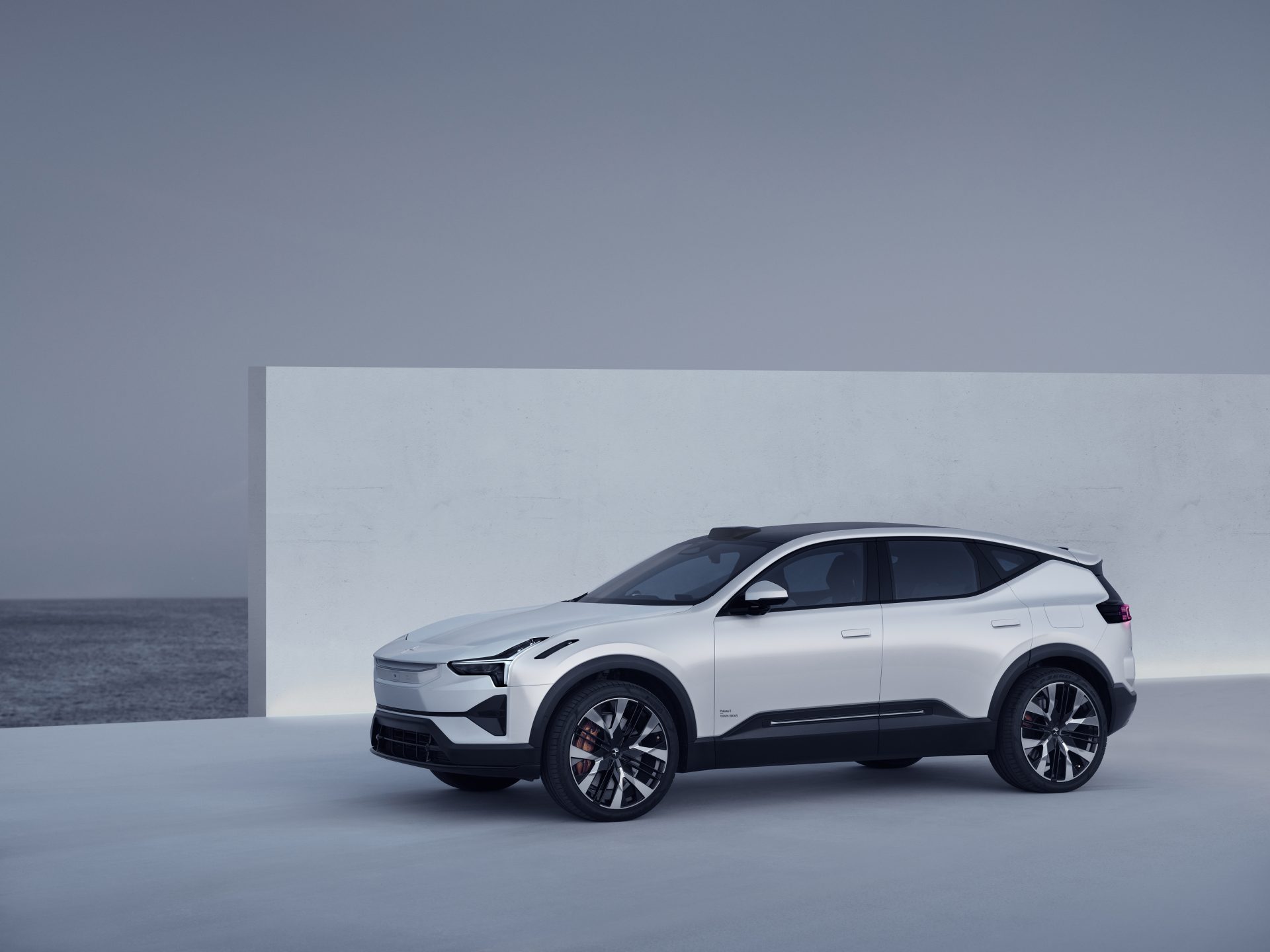
Are Electric Vehicles the Future?
Many experts believe that EVs are indeed the future of transportation. With increasing concerns about climate change, air pollution, and depleting fossil fuel reserves, governments, automakers, and consumers are increasingly looking towards EVs as a more sustainable and efficient mode of transportation.
Several countries and regions have set ambitious targets to phase out internal combustion engine vehicles and promote the adoption of EVs. For example, countries like Norway and the Netherlands have set targets to ban the sale of new gasoline and diesel vehicles by 2025 and 2030, respectively. The European Union has also set targets to reduce greenhouse gas (GHG) emissions from transportation, and electric vehicles are expected to play a significant role in achieving those targets.

Which companies make electric cars?
There are several major manufacturers of electric vehicles in the US and European Union, including:
Tesla
Tesla is one of the most well-known manufacturers of electric vehicles, with a range of models, including the Model S, Model 3, Model X, and Model Y. The company is known for its cutting-edge technology, long-range capabilities, innovative features, and Supercharger network.
Chevrolet
Chevrolet, a division of General Motors, produces the Bolt EV and EUV, a compact hatchback and US respectively, with a range of over 250 miles on a single charge. The American automaker has been a pioneer in EVs and has been producing the Bolt EV since 2016.
Nissan
Nissan produces the Nissan LEAF, which has been one of the best-selling electric vehicles worldwide. The LEAF is known for its affordability, practicality, and reliable performance.
Nissan has also recently introduced its Ariya EV SUV
BMW
BMW has a range of electric vehicles, including the BMW i4, iX, iX1, and iX3. The BMW i4 is a sport coupe with a distinctive design, while the BMW iX, iX1, and iX3 are electric SUVs.
Volkswagen
Volkswagen has recently launched its ID series of electric vehicles, including the ID.3 and the ID.4. The ID.3 is a compact hatchback, while the ID.4 is a midsize SUV.
Renault
Renault produces the Renault ZOE, which is a popular electric vehicle in Europe known for its affordability and practicality.
The company also offers other electric models, such as the Renault Kangoo Z.E., an electric commercial van.
Hyundai / Kia
Hyundai and Kia, both part of the same automotive group, offer a range of electric vehicles, including the Hyundai Kona Electric, Hyundai Ioniq Electric, and Kia Niro EV. These models offer various body styles and price points to cater to different consumer preferences.
Ford
Ford offers the Mustang Mach-E, an electric SUV with sporty styling and impressive performance. They also have the Ford F-150 Lightning, an electrified version of its best selling F-150 pickup truck.
It’s worth noting that the landscape of electric vehicles is constantly evolving, and new models and manufacturers will enter the market in the future.
We have compiled a list of EVs currently available for sale in the US.
Are Electric Vehicles safe?
Yes, EVs are generally considered safe. In fact, EVs are subject to the same safety regulations and standards as traditional internal combustion engine (ICE) vehicles, and they undergo rigorous testing and certification processes to ensure their safety.
Here are some factors that contribute to the safety of EVs:
Battery Safety
EVs are powered by large lithium-ion batteries, which are designed to be safe and reliable. These batteries are extensively tested for thermal stability, crash safety, and durability. Additionally, EVs are equipped with sophisticated battery management systems that monitor and control the battery’s performance and temperature to prevent overheating or overcharging.
Crash Safety
EVs are designed with robust crash safety features, including advanced structural designs, reinforced frames, and strategically placed crumple zones to protect occupants in the event of a collision. They also have airbags, seat belts, and other safety features that are standard in traditional ICE vehicles.
Fire Safety
While fires in EVs are rare, they can occur in extreme situations such as high-speed crashes or severe battery damage. However, EVs are equipped with multiple layers of fire protection, including flame-resistant battery enclosures, thermal sensors, and fire suppression systems to minimize the risk of fires and mitigate their impact.
Electrical Safety
EVs have sophisticated electrical systems that are designed to meet strict safety standards, including protection against electrical shocks, short circuits, and overloads. Additionally, EVs have numerous safety interlocks, such as high-voltage cutoff switches and disconnects, to prevent unauthorized access or tampering with the high-voltage components.
Compliance with Regulations
EVs are subject to the same safety regulations and standards as traditional ICE vehicles, including crash testing, emissions standards, and manufacturing requirements. These regulations are in place to ensure that EVs meet strict safety standards and provide protection to occupants and other road users.
Maintenance and Service
Proper maintenance and service of EVs, including regular battery health checks and software updates, are important to ensure their continued safety and performance. Following the manufacturer’s recommended maintenance schedule and using qualified service technicians is essential for EV safety.
Keep in mind that like any vehicle, the safety of an EV also depends on responsible driving practices, adherence to traffic laws, and proper usage of charging equipment. Overall, EVs are considered safe for everyday use, and they offer many safety benefits such as low center of gravity, instant torque, and advanced driver-assistance systems (ADAS) that can enhance safety on the road.
What is EV range anxiety?
Range anxiety refers to the fear or concern that electric vehicle (EV) owners may have about running out of battery power before reaching their intended destination or finding a suitable charging station. It is often associated with the limited driving range of some EVs compared to traditional gasoline-powered vehicles, as well as the availability and accessibility of charging infrastructure.
Range anxiety can arise from concerns about not being able to find a charging station in remote areas, long-distance road trips, or urban areas with limited charging infrastructure. It can also be influenced by factors such as weather conditions, driving habits, and the perceived inconvenience of charging compared to refueling at a traditional gas station.
However, it’s important to note that with the growing adoption of EVs, the availability of charging stations is increasing, and many EV owners find that range anxiety is often unfounded. Modern EVs are equipped with advanced battery management systems, real-time range estimations, and increasingly longer driving ranges, which help to alleviate range anxiety for most daily driving needs.
Additionally, the proliferation of fast-charging networks, both at public charging stations and within private homes, allows for quicker charging times and increased convenience. Many EV owners charge their vehicles overnight at home or take advantage of workplace and public charging stations during the day, which further reduces range anxiety.
As EV technology continues to advance, and charging infrastructure becomes more widespread, range anxiety is expected to decrease as a barrier to EV adoption. However, it’s still important for potential EV owners to consider their specific driving needs, habits, and access to charging infrastructure to make informed decisions about their EV ownership experience.
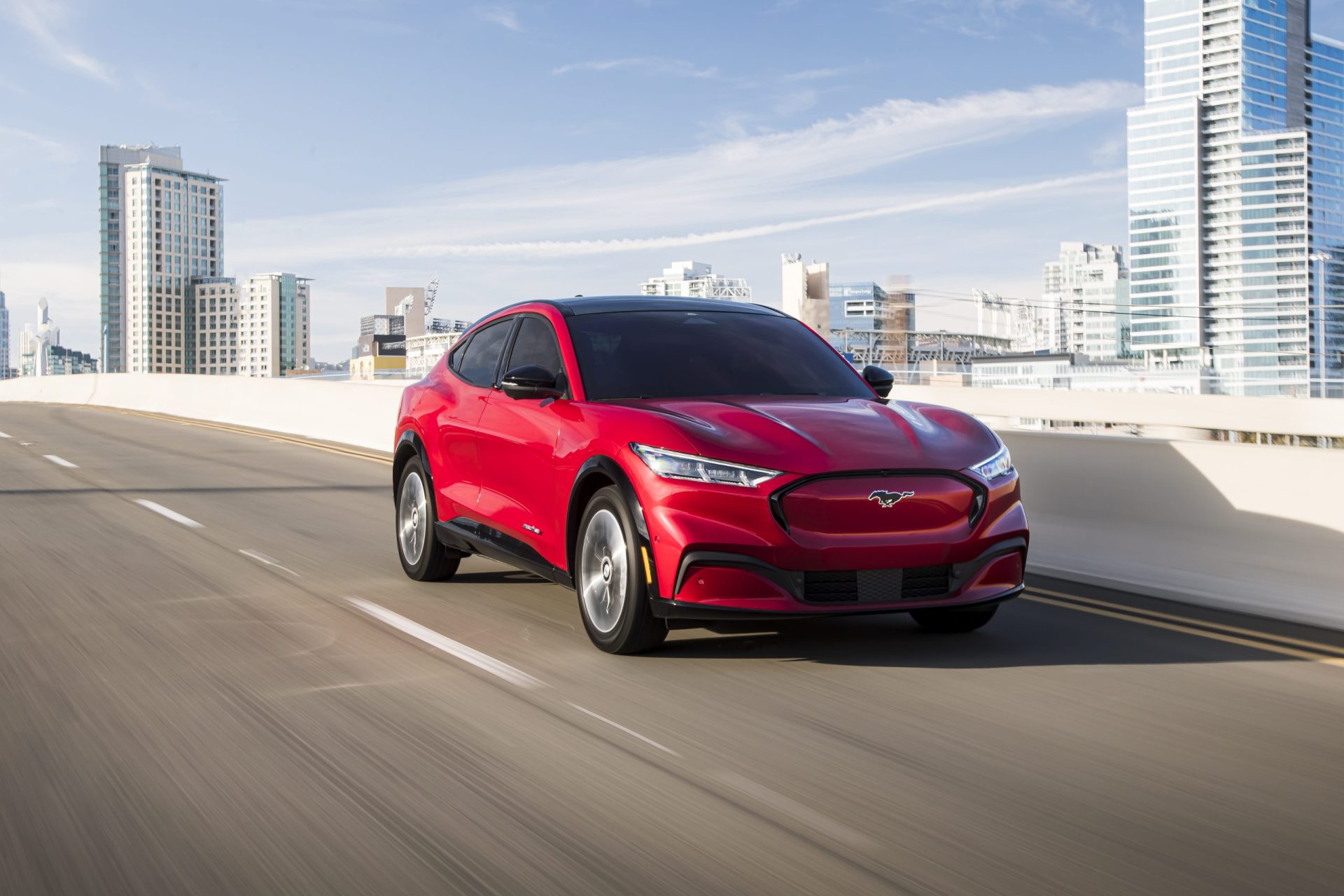
Which EVs have the longest driving range?
As of 2023, some of the EVs with the longest range on the market include:
Tesla Model S Plaid
The Tesla Model S Plaid boasts a range of over 520 miles, making it one of the longest-range EVs available. It features a powerful electric motor and advanced battery technology, allowing for extended driving ranges.
Lucid Air Dream Edition
The Lucid Air Dream Edition, produced by Lucid Motors, offers a range of up to 517 miles. It is a luxury sedan with advanced technology and features, including a large battery pack for an extended range.
Tesla Model X Long Range
The Tesla Model X Long Range, an all-electric luxury SUV, has a range of over 370 miles. It offers ample space for passengers and cargo, making it a practical choice for families.
Ford Mustang Mach-E Extended Range
The Ford Mustang Mach-E Extended Range, an electric SUV, has a range of up to 305 miles. It features a sleek design, modern interior, and various trim options to suit different preferences.
Chevrolet Bolt EV
The Chevrolet Bolt EV has a range of up to 259 miles, making it one of the longest-range affordable EVs on the market. It offers a hatchback design with practicality and versatility.
Porsche Taycan Turbo S
The Porsche Taycan Turbo S is a luxury sedan that offers a range of up to 283 miles. It features a high-performance electric drivetrain and luxurious interior amenities.
Hyundai Ioniq 5
The Hyundai Ioniq 5 is a compact crossover EV with a range of up to 244 miles. It features a unique design, spacious interior, and fast charging capabilities.
Kia EV6
The Kia EV6 is a midsize crossover EV that offers a range of up to 247 miles. It features a sleek design, advanced safety features, and a spacious cabin.
Keep in mind that the driving range of an EV depends on several factors, including the battery capacity, driving conditions (such as speed, terrain, and temperature), driving behavior, use of accessories, terrain, battery age and health, and charging infrastructure. A higher-capacity battery, smooth driving habits, favorable driving conditions, and proper battery maintenance can help maximize the driving range of an EV, while aggressive driving, extreme weather conditions, and lack of charging infrastructure can reduce the driving range. It’s important to consider these factors when estimating the driving range of an EV.
Do EVs work in cold weather?
Yes, electric vehicles (EVs) can work in cold weather, although extreme cold temperatures can affect their performance and driving range. In cold weather, EVs may experience reduced driving range due to factors such as increased battery drain for heating, lower battery efficiency, and reduced regenerative braking. Additionally, colder temperatures can affect the charging time of the EV, as lower temperatures can slow down the charging process.
Modern EVs are designed with various features to mitigate the effects of cold weather, such as battery thermal management systems that help regulate the temperature of the battery for optimal performance, and cabin pre-conditioning that allows the vehicle to warm up before driving, reducing the reliance on battery-powered heating.
It’s important to note that the specific performance of an EV in cold weather can vary depending on the make and model of the vehicle, battery size, and other factors, so it’s always a good idea to consult the manufacturer’s recommendations for cold weather operation and charging.
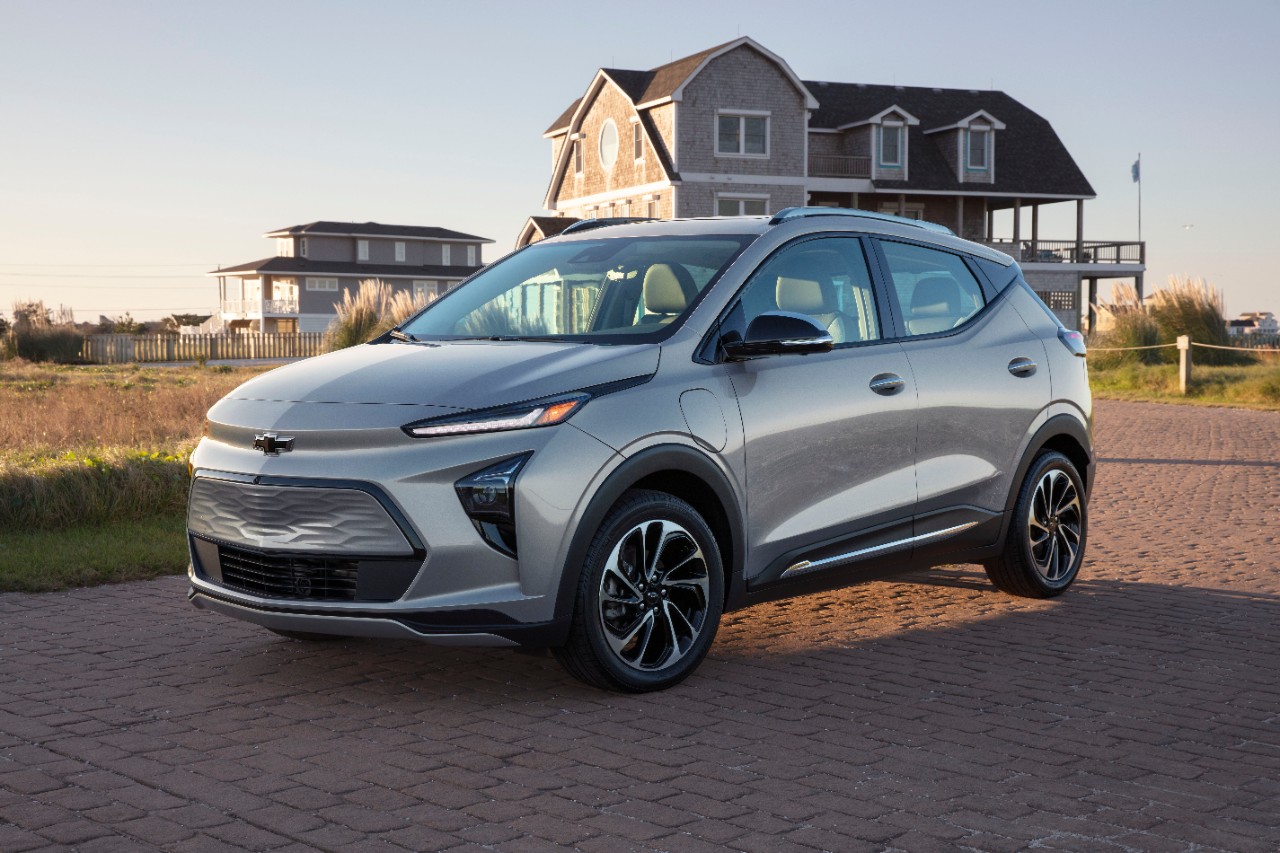
EVs are an exciting and rapidly evolving form of transportation that offer numerous advantages, including zero tailpipe emissions, lower operating costs, reduced dependence on fossil fuels, and potential environmental benefits. Major manufacturers in the United States and the European Union, such as Tesla, Chevrolet, Nissan, Renault, BMW, and Volkswagen, among others, are investing heavily in EV production and innovation, showcasing a growing interest and commitment to this technology.
While there are challenges associated with EVs, such as limited charging infrastructure in some areas, higher upfront costs, and potential range anxiety for BEVs, the overall benefits and potential of electric vehicles make them an important part of the future of transportation. As the world seeks to reduce greenhouse gas emissions and mitigate the impacts of climate change, EVs are gaining momentum as a viable and sustainable alternative to traditional gasoline-powered vehicles.
Finally, as a consumer, considering an EV can be a step towards reducing your carbon footprint and contributing to a cleaner and more sustainable future. Government incentives, lower operating costs, and advancements in technology are making EVs more accessible and attractive to a wider range of consumers. It’s important to research and understand the different types of EVs available, their features, and charging options to make an informed decision that best fits your lifestyle and needs.
Subscribe to Our Weekly Newsletter
Enter your email to get the best of Clean Earth Energy straight to your inbox.

